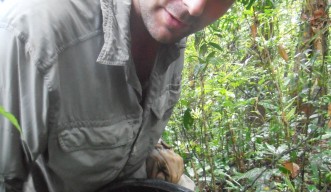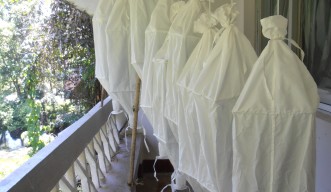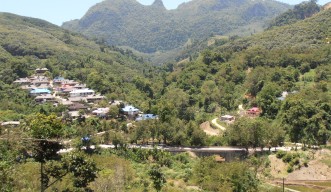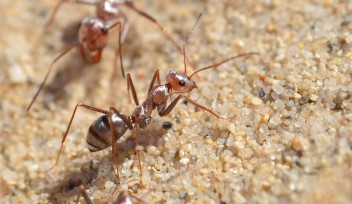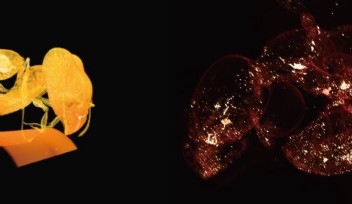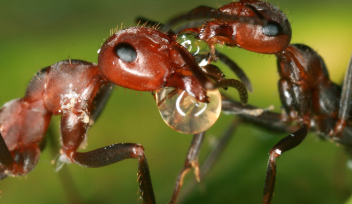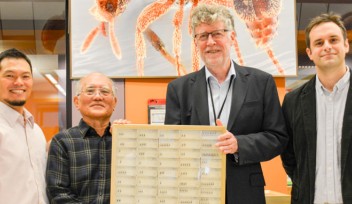Behind the Scenes in Ant Research
Several weeks ago, Prof. Economo of OIST’s Biodiversity and Biocomplexity Unit won an award for a research article that used ants to test a famous theory. But have you wondered, “How does he get his ants in the first place?”
Behind the research, there is the process of collecting ants in the field. At the foothills of the East Himalayas lies Xishuangbanna Prefecture, one of the most species-rich areas in China. This diversity, however, is now being threatened by deforestation. Pristine forests are progressively cut and replaced by rubber plantations, which reduce suitable habitats for organisms that live there. To investigate the effects of such habitat disturbances on biodiversity and species composition, members of Professor Economo’s Biodiversity and Biocomplexity Unit recently went for a two week journey in Xishuangbanna Tropical Botanical Gardens to collect ant specimens from various habitats.
The collections from this trip will also benefit another project. Professor Economo’s unit is completing the phylogenetic tree of the ant genus Pheidole, one of the most widespread genus of ants which include over a 1000 species. To put things in perspective, this sole ant genus comprise as many species as a fifth of all mammals.
“There is a gap in the phylogenetic tree of Pheidole at the moment. Xishuangbanna was an ideal place to collect specimens because that is where we can collect species that would fill in the gap,” said postdoctoral fellow Benoit Guénard, who led this expedition. Guénard is an expert who has compiled a massive database of ant species and their geographical distributions. Other members on this trip were Cong Liu, an OIST graduate student, and Benjamin Blanchard, an undergraduate research intern at OIST. Liu’s previous experience in this area of China during his Master’s degree was instrumental in exploring Xishuangbanna. Together they monitored the diverse ant fauna through the use of several collection techniques.
The main method used, called Winkler extraction, consists of sifting leaf litter to extract organisms within it and progressively drying the litter in a bag especially designed for this purpose. The bags are hung up so as to force ants and other invertebrates to leave the leaf litter, which becomes less suitable habitat as it dries. At the very bottom an ethanol-filled cup captures the fugitives to preserve them for future research. There were difficulties employing this method in Xishuangbanna, however, because there were no facilities suitable for using this technique. Members of this trip had to collect bamboo in the field and cut them to support the ropes from which to suspend the extractors. Blanchard remembers, “Benoit has done Winklers at many other places before, but he said this was the hardest it has ever been, even harder than in the core of Manhattan, New York City!”
Ants were also collected through hand collection, in particular by picking ants up with fingers, or by catching them with tweezers. Perhaps the most interesting is using a device known as “pooters” to entomologists. Pooters are insect designed aspirators, made of tubes with a straw-like tip at the end to suck on. Sucking in air through this tip will vacuum in the ants. This is a useful strategy when collecting samples of colonies composed of thousands of running individuals.
The specimen collection does not end here. The sorting process is also laborious. A sample from a sole Winkler extractor can contain as much as 1000 individuals and 50 different species, as well as other arthropods like spiders – and all of these must be separated manually by morphological features, one at a time. Altogether, over 80 Winkler bags were realized. Currently the unit is identifying the species that they collected in Xishuangbanna. In the past, approximately 240 different species have been found in Xishuangbanna Tropical Botanical Gardens alone. Although it is not yet clear how many species were collected on this trip, they already identified species that had not been found in Xishuangbanna before.
Research Unit
For press enquiries:
Press Inquiry Form










